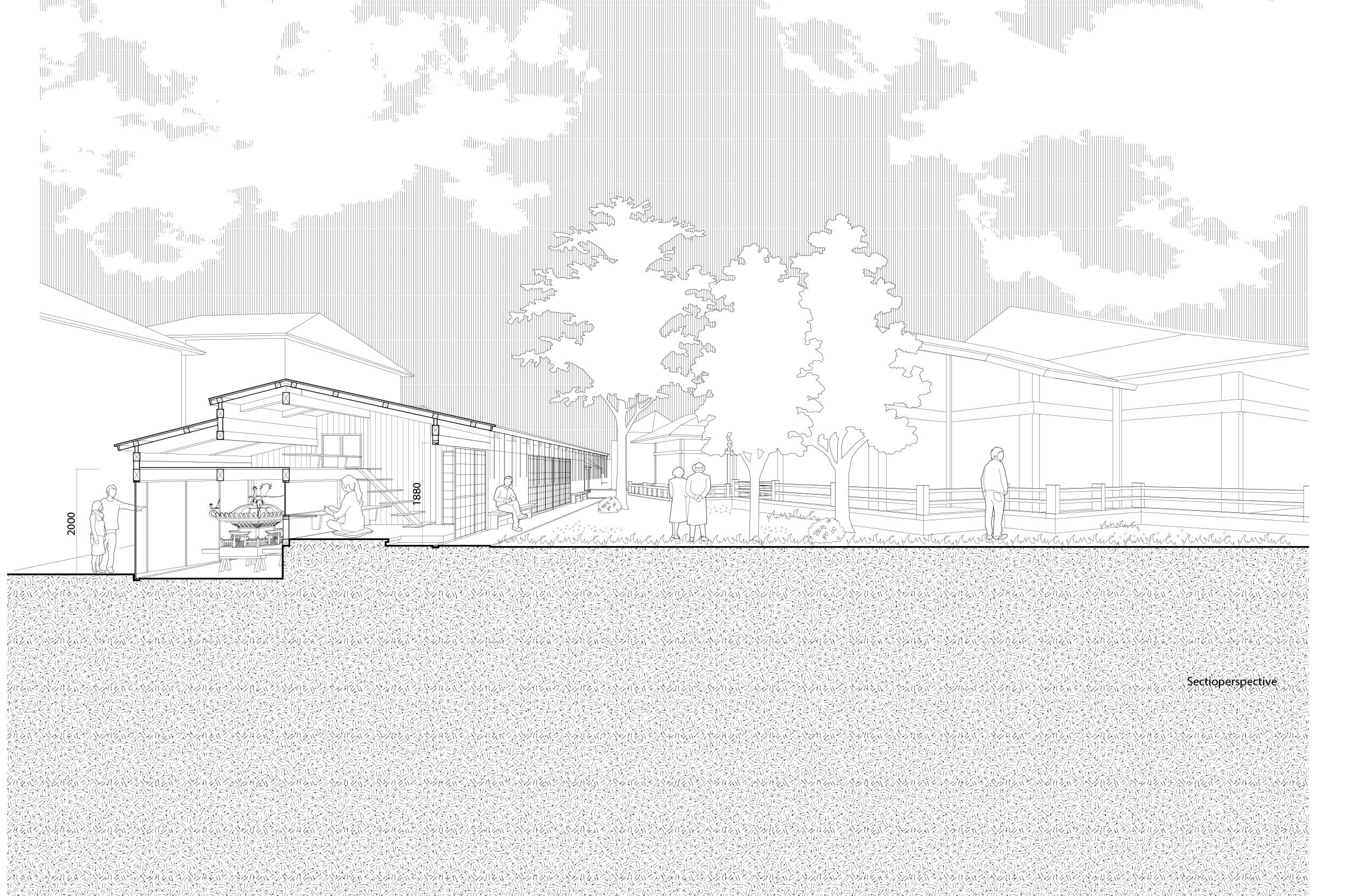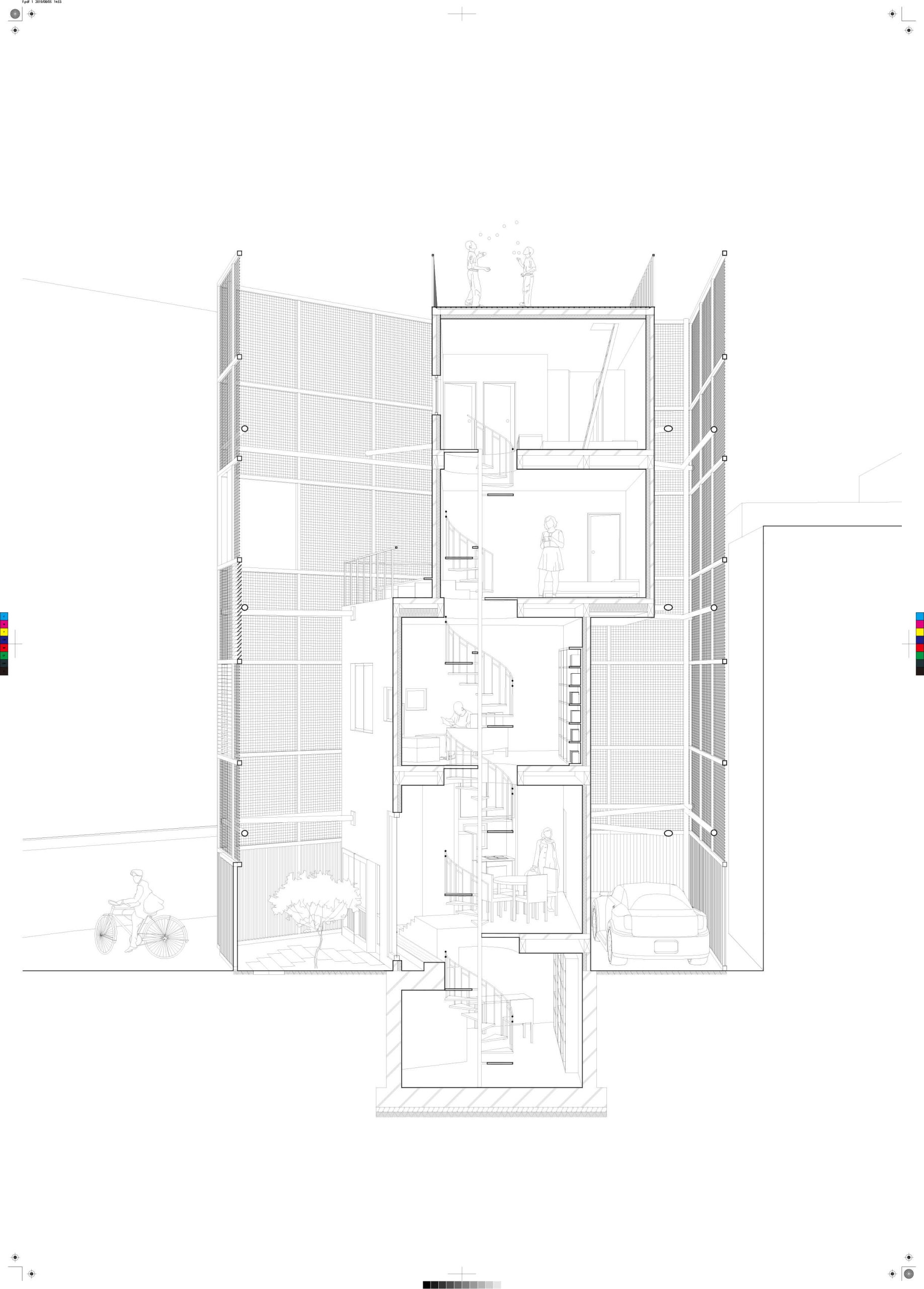SHRINNE HOTEL
In Japan, there is a religious space as an open space that is closely related to the lives of ur- ban citizens. Not only during the festival, but it is also a space like a public square where nearby people gather in daily life.
The annual festival is the most important ritual held annually at shrines. The annual festival is held once a year, often on a day that people can gather this public space.
at th same time, A mikoshi is a sacred reli- gious palanquin (also translated as a portable Shinto shrine). Shinto followers believe that it serves as the vehicle to transport a deity in Japan while moving between the main shrine and temporary shrine during a festival or when moving to a new shrine. Often, the mikoshi resembles a miniature building, with pillars, walls, a roof, a veranda, and a railing.
During a matsuri (Japanese festival) involving a mikoshi, people bear the mikoshi on their shoulders by means of two, four (or some- times, rarely, six) poles. They bring the mikoshi from the shrine, carry it around the neighbor- hoods that worship at the shrine, and in many cases leave it in a designate.
Student: Nawin Wongphan
Warande
Tower House / Takamitsu Azuma
Glass
Glass is a transparent material in terms of light and sight, sometimes also for sound or temperature, yet at the same time is opaque in terms of smells or the movement of persons or things. In separating different environments, it simultaneously links them; it allows interactions, yet no physical contact. These distinctive features appear to allow certain forms of human interplays to unfold that otherwise would be impossible. This is particularly true in the case of private encounters, where gestures and gazes can be exchanged through the glass; where a forbidden closeness is possible, albeit devoid of all transgression; or where even, through the reflection of the glass, silent observation is possible.

